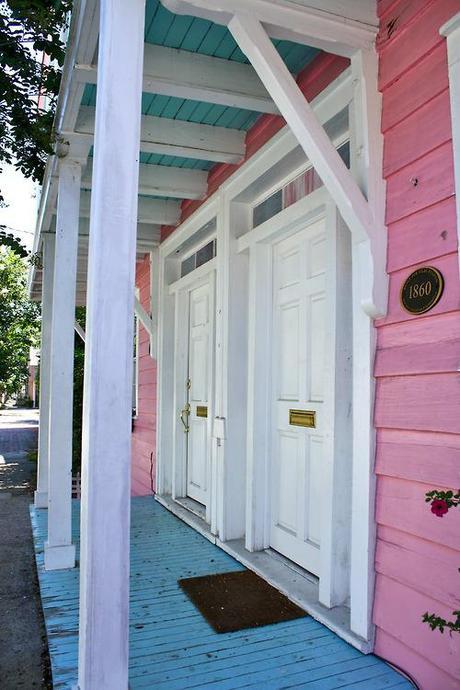I’ve always wondered why the outdoor ceilings of colonial homes are painted eggshell blue (my parent’s house was built in 1781, and it has one on the front porch).
In Savannah, I found out the reason, and it’s something of a troubled one. The color is called “Haint Blue,” and it’s supposed to ward off evil spirits. Originally, it was made from indigo, buttermilk, and lime, and it adorned the homes of slaves.
In Georgia and South Carolina, many of these slaves descended from the Gullah people in Africa, who believed that “haints” were malevolent spirits, caught between the living world and the afterlife. Haints are angry, and they want to do harm to humans. The one thing that they cannot do is cross water.
Rather than building the recommended moats around their houses, slaves would make the mixture of indigo (or any other blue pigment), buttermilk, and lime in pits in their front yards. Then, they would paint the watery mixture on the outside of their houses, hoping that the haints would become confused, and think that they blue was water.
Haint Blue was later widely adopted in the South, and can be found on many of the grand homes in Savannah. The excuse for this today is that the color extends the sky, keeping insects from the inside of the house. If the owner is using actual haint paint, this is actually true, because insects tend to stay far away from lime.
Read more about Haint Blue here.

